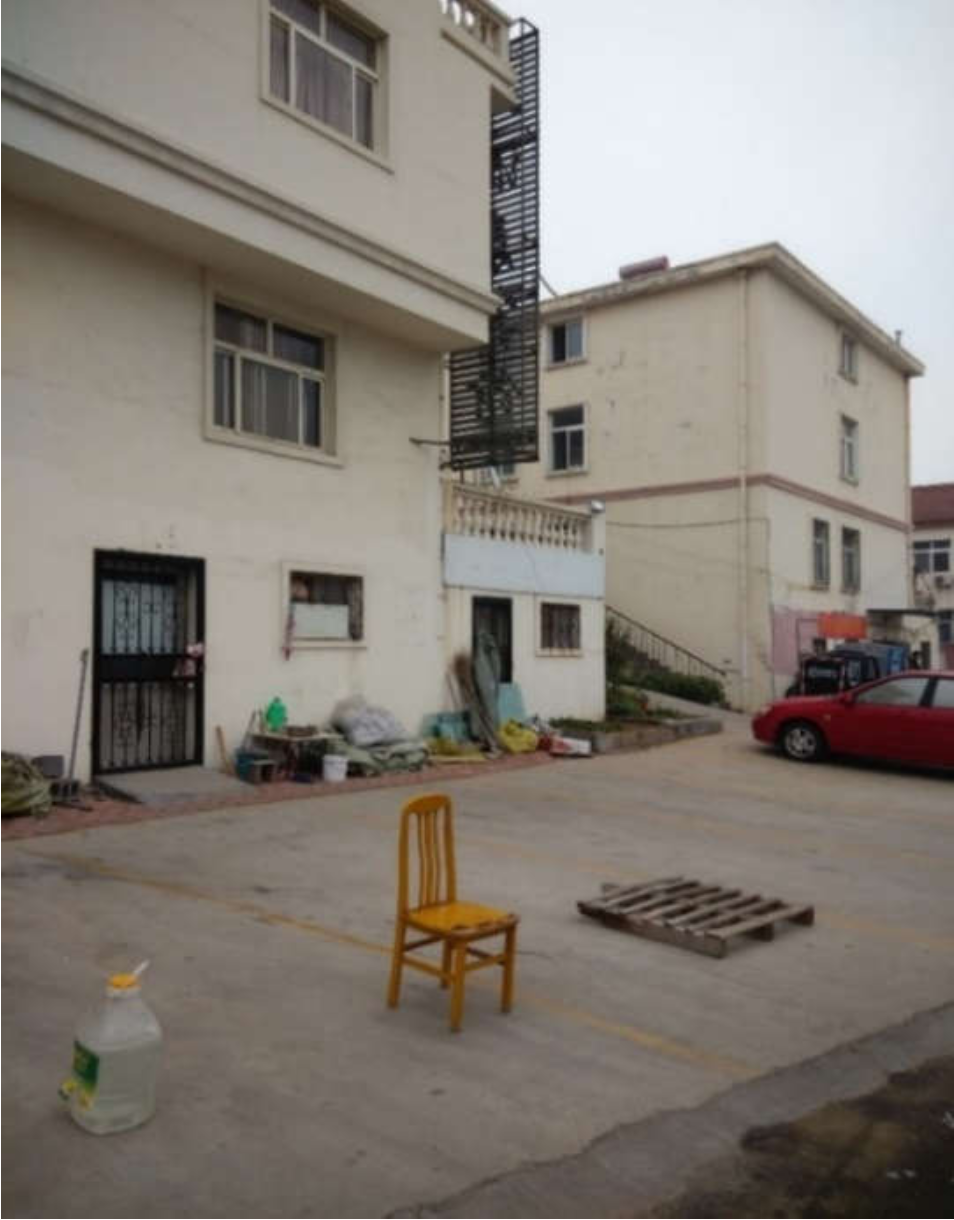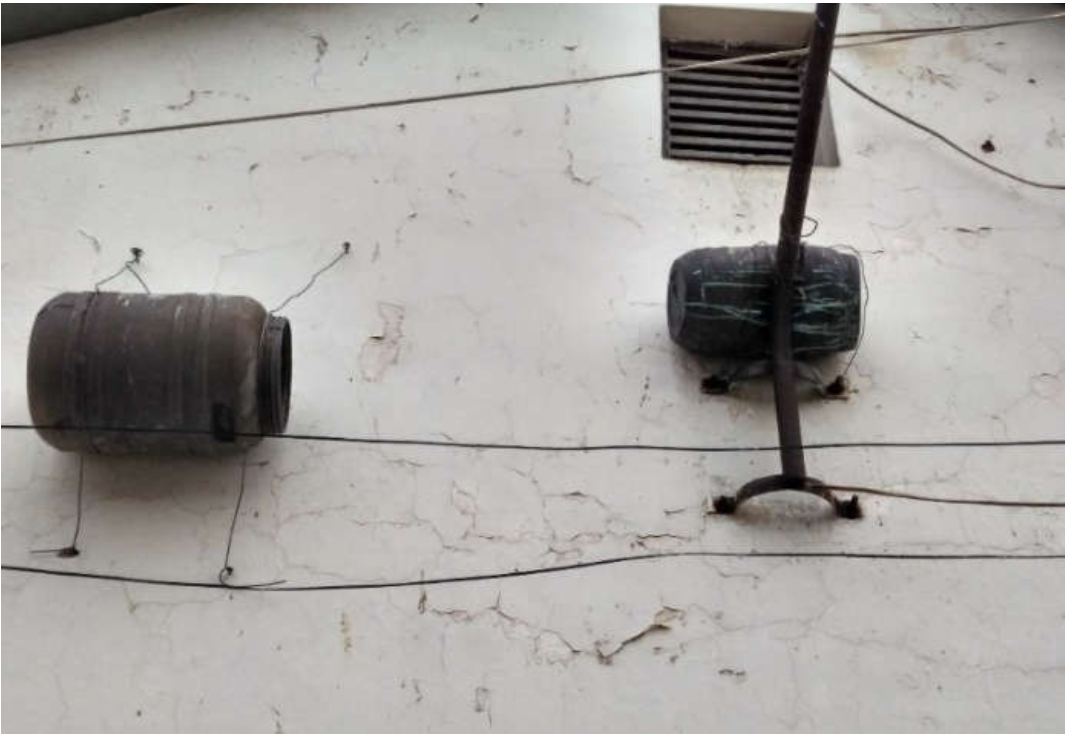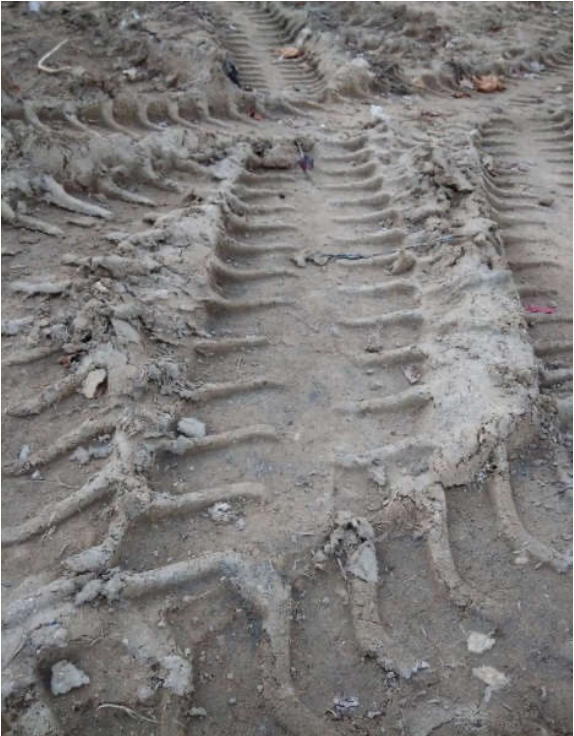The Inspirational
Value of Unintentional
Design Occurrences:
Freeing Aesthetic
IS Vuscan1 and S Feng
April, 2011
Defining the Unintended Design Occurrences
The following circumstances could be nominated as unintentional design occurrences:
* incidents caused by choices regarding: shapes, colors, materials, associations of the three, which are found under the influences of various forces that impose upon them a change in their initial status.
* visual consequences of actions performed on materials and products, shapes and surfaces, and reactions to uninformed association of the above mentioned properties.
* patterns on materials, imprinted as a result of mutual influences or frictional results.
* aesthetic valences encountered within compositional results of random objects’ association.
This article is focused on determining the inspirational and aesthetic value of those unintended design situations as induced by objects which, through their visual appearance, and peculiar context, raised awareness and triggered an interest in their status. The analytical process has as starting point tracing visual manifestations of peculiar inter-objectual relations, or object–space associations, that induce focus and aesthetic review, and suggest latent potential for generating inspiration in thinking innovation. Intuition and chance are intrinsic factors of data registration in a borderless inspirational area. The transcendence of the ordinary occurring within an object while taken outside its initial context, acquires a halo of extra-ordinary value (figure 1).
The aesthetic appeal of what resides in such unintentional occurrences refers to the objects themselves. It is predetermined by a whole sequential imagery composing a certain scene, the scenic decorum in situ. The scrutinized object-oriented composition is a result of actions dictated by fulfillment of functionalities with the particular objects as prime characters. In such a case, the aesthetic value is unaccounted for, the sole purpose being that of strict functionality. The objects occupy a strategic place in order to perform a certain utilitarian function, in the case illustrated in figure 1 that of signaling private parking space. Improvisation with objects and intuitive usage of objects is a subject acknowledged, dissected and naturalized in the domain of design[1]. The objects are readapted to perform previously unassigned tasks, and by this, the user restores usefulness (figures 2 and 3).
This seems like a migration of function, taking us a step further into discussing function as self-dependent, freed from the objects which mediate its fulfillment. Such frame of judgment is somehow ancestral[2]. An object at the end of its functional life is reinstated into a utilitarian circuit if rehabilitation prevails in the detriment of discarding (figure 4). Through postponed discarding, the object is kept outside the landfill, therefore determining the delay in the purchase of a new object.
On a personal level, through this act of postponed discarding, one submits to the tenets of sustainable practice [3]. Emotional liaisons are the drivers behind postponed discarding [4]. If the object resonates with the user on an emotional level, this increases the chances of updating, repairing, readapting or preserving the object. Emotional liaisons are the drivers behind postponed discarding[4].
If the object resonates with the user on an emotional level, this increases the chances of updating, repairing, readapting or preserving the object. Discarding is postponed and the object is preserved for fulfilling uncertain tasks. Even if uninstalled in a utility post, they follow other usage patterns, inchoative of improvisation, where creativity is expected to interfere.
The quality of the unintentional design occurrences lies in details and random associations. Within the contexts most likely to accommodate unintentional design occurrences, cheapness and improvisation is raised to higher spheres. The rectification of poor design is already at hand. People mediate the existence of particular spaces through guiding intervention that best suits their, if solely, practical purpose. In the process, they are creating chances for aesthetic appeal. Its existence, if occurring, is involuntary. The motive - long lived objects exhibiting patterns dictated by time and usage. The objects (acted upon), materials, were chosen following no other criteria but their handiness, lowest price and strict functionality.
The intention is to highlight the existence of unintentional design occurrences that could be found with predominance in un-designed scenarios, or within a limited range, in case of alteration imposed on designed scenarios. They are the fortuitous outcomes of submitted improvisation, or adaptation of existing design scenarios to better fit a personalized space. Unintentional design occurrences often escape categorization and are discarded as incapable of sustaining an aesthetic scrutiny. The unintentional design occurrences are, at their inception, often unfamiliar with the notion of aesthetics, or aesthetic value, but are linked to functionality and economy. Derived from these characteristics springs what in my perception adheres to beauty.
The Inspirational Value of the Unintended Occurrences
The article stresses the inspirational value of the unintended design occurrences. It is intended as a theoretical approach to what is un-designed, for faulted, improvised, ignored, left to chance – unintentional design occurrences - considered in terms of inspirational value for freeing aesthetic. Each one of them is a manifesto against uniformity, and pleading for diversity, amalgam and boldness in deciding forms. They advocate against prolonging the ubiquity of dullness as a weary presence in created environments, and common dismissal of improvisation for being gestures of incompetence.
The article draws attention to the unlimited possibilities that these unintentional occurrences could bring to the field of design, discussing unintentional design occurrences not solely from the perspective of what they can offer to endeavors concerning optimization of functional properties, accommodating consumer’s needs, but mainly freeing aesthetics (figure 5). Usage of cut from context objects, bear the outcome of materials reaction to outer stimuli. Opting for a loose control over green spaces is a form of rebellion, pushing the boundaries of permissiveness as regards established urban aesthetics.
As if following an organic development pattern, the abstract graphics given by intermingling and juxtaposing of cable networks or pipe networks thrive in a setting abandoned to improvisation (figures 6 & 7). Constituting annexes out of salvaged, disparate materials with no attention given to integration into décor, they become in time, through the evenness patented by passing of time, a pastiche of design.
validity of the assumption that, by selecting, registering and understanding certain design situations as being consequences of prior states, this would conduct the process toward advancing design remedies. Training into discovering incipient design corrections in unintended design situations, may ease coupling to an inexhaustible inspirational network.
The method implied for gathering information has as a starting point in which a certain design situation is perceived as aesthetically appealing, it’s followed by photographic capturing, then further inquiry and repartition, all evolving in prospectuses for further designs. The fact of strictly observing, analyzing, acknowledging the power of human creativity, intuition, skill is in itself a finite action. While in search for inspiration, one is predisposed to observe intentionally and to discover randomly. Such is the case of encountering deficiencies in present design, signaled by counter reactions from the users.
Unintended design occurrences are recipients of inspiration and guides for correcting design. This article attempts to instill a method for sharpening attention. Users point to the faults, signaling where and what, they are in a rudimentary sort of way showing –how [5]. One could take this in and work out solutions or appreciate the ingenuity in itself.
Within a contemporary contextual development, the uttered need of perpetuating traditional elements considered of perennial validity is to be repudiated, as elements of composition. Unintentional design occurrences have a saying in confectioning forms and structures, materializing concepts, shaping contemporaneity through incipient inspirational value. The melancholy for a reverberating past will impede thinking innovation.
This article pleads in favor of creativity coming in new and experimental samples. The direction can be intuited in composing chameleonic structures changing and growing from within, developing into something of continuous becoming [6]. The unintended design occurrences could be considered as fortuitous happenings with inspirational value and guides for improving design (figure 8).
Freed Aesthetics
There is no purposeful aesthetic dimension of these unintentional design occurrences. It is intriguing that these occurrences are developed through processes with negative connotations. Other laws dictate their occurrence: shortages, habits, accessing the vernacular by acting based on tips acquired in an over-the-fence kind of verbal transmission. Improvisation stands for the need of keeping an appearance of mobility. It implies emotional involvement. The overall impression is that of stringed chaos. It touches the realm of the grotesque. Its outcomes could provoke contradictory reactions and critiques. They are what might be called abject manifestations in design.
Were these, accidentally achieved, aesthetically appealing ambiences, intended to emit aesthetic stimuli? Could it be that they have strived to inoculate aesthetic appeal since their inception? The idea of unintended aesthetic is based on our preconception that these occurrences are the consequences of strictly functional manifestations. They are developed in time, with an obliterated inception momentum, perpetually adjusting to accommodate spontaneous adjustments. As the results of improvisation, they present deficiencies and malfunctions. The objects lack consideration for concepts as: aesthetics, safety, ergonomics and ecology. They follow the sole purpose of fulfilling a certain task.
The Aesthetic Appeal of Unintended Design Occurrences
The article’s enquiry is in relation to those unintended design occurrences to be found if searched for with an open mind and an eye trained to discover. The element of surprise is conspicuous. It is about a scenario in which one might incidentally register a glimpse of beauty revealing itself with humility in raw utterances of creativity. Beauty manifests itself in ample variations. The aesthetics of niche endeavors in the field of object manipulation and installation within a certain space.
able aesthetic valor could build up into solid compositions by permutation in an optimal space, and in relation with other objects, which bring mutual value through fortuitous association: surrogates of gardens grown in peculiar formats and sites, artisanal window frames in color outside chromatic harmonies and juxtapositions, the droppings from the ventilation systems, leaving vertical and ferruginous traces in gradient values on the wall, etc.
These occurrences happen accidentally, following not many laws. They perpetuate their existence in a continuous state because of negligence, omission, or hazard. Unintentional design situations could occur most unexpectedly in propitious circumstances.
The questions that arise while acknowledging these facts are:
* what induces visual appealing?
* which are the circumstances that foster such occurrences?
* how could they benefit design? Suppositions on design potentialities conditioned by aforementioned unintended occurrences.
People adjust space, enhance the possibilities of space and through this aesthetic phenomena could occur. The viewer reactions range between confusion, bewilderment, frustration - the result of contemplating the ephemeral character of the aforementioned occurrences. The need of solving what puzzles about this visual appeal emanating from such unintended occurrences is incessant. The article intends to lay the foundation for further research to elucidate this phenomenon.
Unintended design occurrences are the visual result of constant interactions evolved in time. The effect tends to become more acute if the cause of the aesthetic incident is not removed or attenuated. The circumstances under which these occurrences thrive are with preponderance antiquated spaces with finessed renovations, which have stagnated or undergone an organic pattern of development. In the case of urban spaces, they imply law’s indulgence, a blind eye from the citizens, abstraction from demolition, reconstruction, re-design, from all that could restrict this peculiar assimilation of space. Its existence is determined by a process of alteration of an initial status quo.
The foothold for the occurrence of aesthetic design incidents are in relation to that which no longer corresponds to the stage of an existing time, which is obsolete and under permanent threat of extinction.
Perpetual remodeling of urban space and accelerating rate of architectural renewal is the end of these plagued design occurrences. It is speed turned into shape. Vacant land is incorporated and old neighborhoods are being reformed with the ease of a child knocking down a house of blocks and feverishly starting anew. These hazardous staged spaces under scrutiny are outlived. The new is overwhelming and seldom exhibits that which could pass as something of melancholic beauty.
The inquiries are in relation to those unintended design occurrences taken place in such hazardous staged compositions. They result as accidents and become integrated into the scene while concomitantly transforming the scene by altering it. For example, a broken glass filtrates the sun beams and becomes an object of contemplation. It transcends its purely utilitarian status and through hazardous alteration accumulates aesthetic value. Compared to its vicinity (the un-deteriorated panels of glass) its valor shifts owing to its newly acquired quality of absorbing and reflecting light thus creating an ever-changing guise. The history of this glass panel is brought to the attention of the viewer (initial state, alteration factor, visual result– are all circulating phases of the object provoking judgments).
The becoming is transient in its temporary existence. The intriguing character, the disruption of harmony and symmetry and the feeling that something was given for free, all collaborate to the exchange that occurs between the viewer and that which is viewed.
[1] Norman D A 1988 The Psychology of Everyday Things (New York: Basic Books Inc)
[2] Gibson J 1979 The Ecological Approach to Visual Perception (Boston: Houghton Mifflin Company)
[3] Barr S 2003 Strategies for Sustainability: Citzizens and Responsible Environmental Behavior. Vol. 35, No. 3 (Sep., 2003), pp. 227-240
[4] Norman D A 2004 Emotional Design: Why We Love (or Hate) Everyday Things (New York: Basic Books)

Figure 1.
Private parking space signals.
Metal barrels as flower pots. Where being old, rusted and distorted add value to the aesthetic image of the ensemble.

Plastic barrels as pigeon shelters.


Motorcycle helmets as pigeon shelters.
 Figure 5.
Figure 5. Aesthetic markers. Traces on soft soil.
Aesthetic markers. Pipe network.


Aesthetic marker. Cable network.
 Figure 8.
Figure 8. Wind shield. Correction marker.